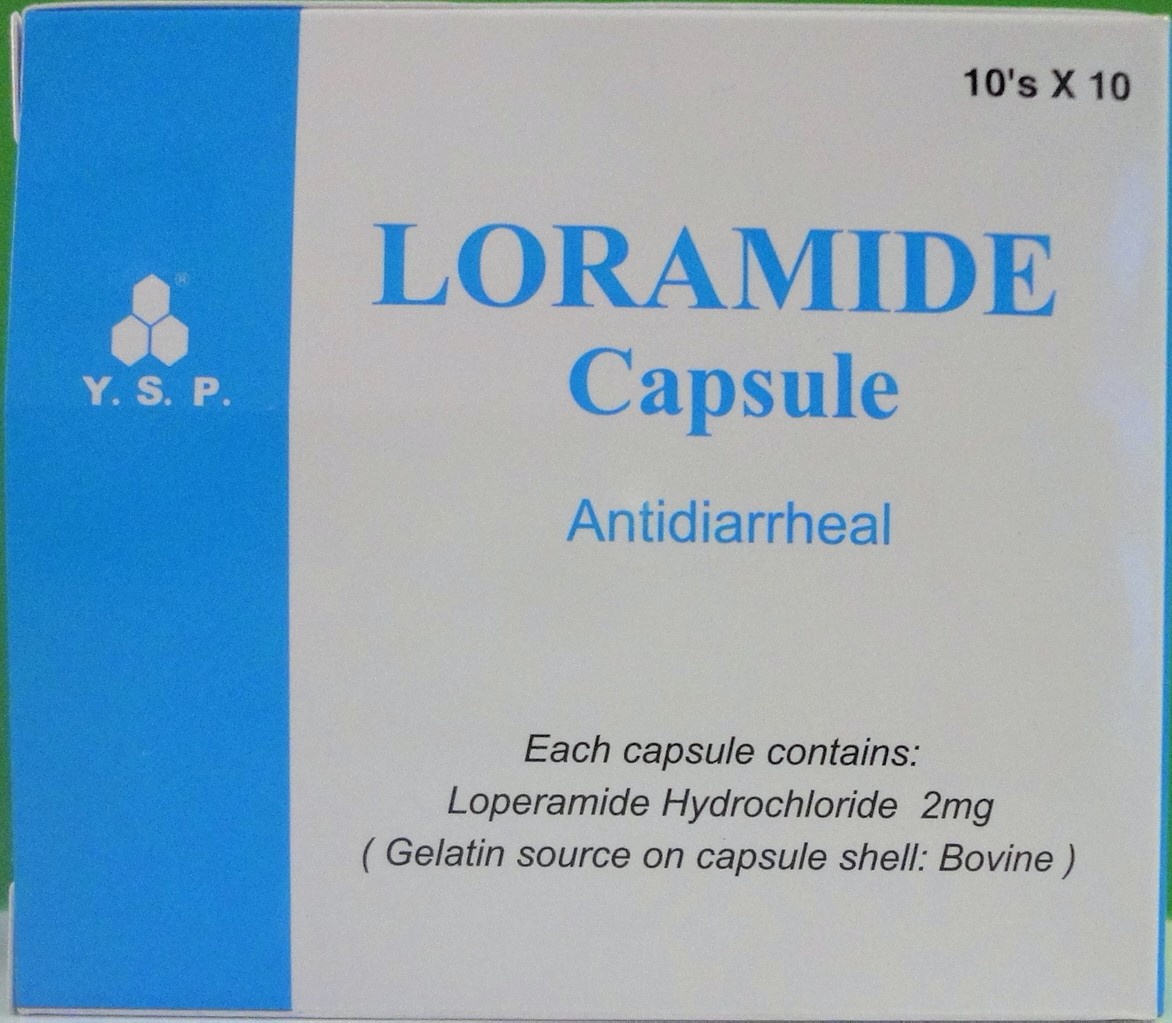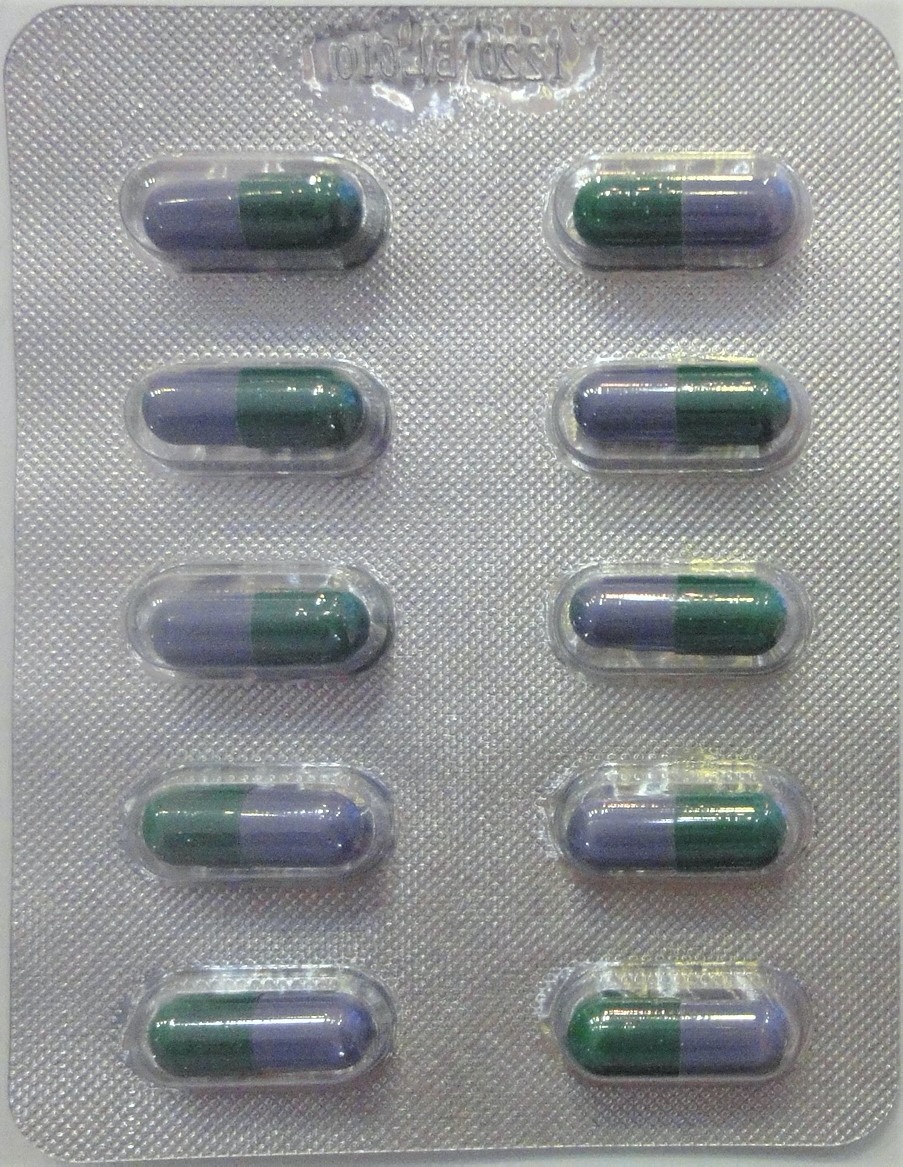LORAMIDE Capsule
ក្រុមហ៊ុនផលិតឱសថ:
Y.S.P.INDUSTRIES(M) SDN.BHD. Malaysia.
ក្រុមហ៊ុនចែកចាយឱសថនៅប្រទេសកម្ពុជា:
INTERMEDICA


- សារធាតុសកម្ម
- ប្រសិទ្ធិភាពព្យាបាល និង កម្រិតប្រើប្រាស់
- ហាមប្រើ
- ផលរំខាន
- អន្តរប្រតិកម្ម
- ស្ត្រីមានផ្ទៃពោះ និង ស្ត្រីបំបៅដោះកូន
- ការប្រុងប្រយ័ត្នជាពិសេស
- សកម្មភាពឱសថ បរិយាយប័ណ្ណឱសថ
-
សារធាតុសកម្ម
-
ប្រសិទ្ធិភាពព្យាបាល និង កម្រិតប្រើប្រាស់
Indicated for the control and symptomatic relief of acute non-specific diarrhea and of chronic diarrhea associated with inflammatory bowel disease.
Dosage
Adults:
Acute diarrhea:
Oral, 4mg after first loose bowel movement, followed by 2mg after each subsequent loose bowel movement.
Chronic diarrhea:
Initial: 4mg, followed by 2mg after each subsequent loose bowel movement until diarrhea is controlled.
Maintenance: Oral, 4-8mg a day in divided daily doses as needed.
Daily dosage should not exceed 16mg.
Children:
Children above 6 years of age: Oral, 2mg twice a day.
Children 8-12 years of age: Oral, 2mg 3 times a day.
Maintenance: Oral, reduced to meet individual requirements; some clinicians recommended one-third to one-half the initial dose.
-
ហាមប្រើ
1. Loperamide should not be used in the treatment of acute diarrhea associated with organisms that penetrate the intestinal mucosa (eg. toxigenic E.coli, Salmonella, and Shigella) or in patients with pseudomembranous colitis associated with broad-spectrum anti-infectives.
2. in patients with known hypersensitivity to the drug
3. in patients in whom constipation
-
ផលរំខាន
abdominal pain, distension of discomfort, constipation, drowsiness, dizziness, fatigue, dry mouth, nausea and vomiting, epigastric pain may occur. Hypersensitivity reactions including rash have been reported. Children may be more sensitive to adverse CNS effects of the drug than adults.
-
អន្តរប្រតិកម្ម
Concurrent use of Loperamide with an opioid analgesic may increase the risk of severe constipation.
-
ស្ត្រីមានផ្ទៃពោះ និង ស្ត្រីបំបៅដោះកូន
Although there are no indications that Loperamide HCl possesses teratogenic or embryotoxic properties, the anticipated therapeutic benefits should be weighed against potential hazards before Loperamide HCl is given during pregnancy, especially during the 1st trimester.
Small amounts of Loperamide HCl may appear in human breast milk. Therefore, Loperamide HCl is not recommended during breastfeeding.
-
ការប្រុងប្រយ័ត្នជាពិសេស
Loperamide is not recommended for children under 6 years of age. Its used has been associated with fatal episodes of paralytic ileus in infants and young children.
1. In acute diarrhea, if clinical improvement is not observed within 48 hours, the administration of Loperamide should be discontinued.
2. Patients with hepatic dysfunction should be monitored closely for signs of CNS toxicity because of the apparent large first pass biotransformation.
3. Because of the greater variability of response in young children, Loperamide should be used with particular caution in this age group. Dehydration may further influence the variability of response.
4. This medication should not be used in the case of acute dysentery which is characterized by elevated temperatures and blood in stools.
5. If fluid and electrolyte depletion occur in the patients taking Loperamide, administration of appropriate fluid and electrolyte therapy should be considered.
6. Loperamide therapy should be discontinued promptly if abdominal distension occurs or if other troublesome symptoms develop in patients with acute ulcerative colitis.
7. Appropriate fluid and electrolyte therapy should be given to protect against dehydration in all cases of diarrhea. Oral rehydration therapy- which is the use of appropriate fluids including oral rehydration salts – remains the most effective treatment for dehydration due to diarrhea. The intake of as much these fluids as possible is therefore imperative.
8. Drug – induced inhibition of peristalsis may result in fluids retention in the intestine, which may aggravate and mask dehydration and depletion of electrolytes, especially in young children. If severe dehydration of electrolyte imbalance is present, Loperamide should be withheld until appropriate corrective therapy has been initiated.
-
សកម្មភាពឱសថ
1. Loperamide slows intestinal motility through a direct effect on the nerve endings and/or intraneural ganglia of the intestinal wall. It is generally believed to act by interfering with the cholinergic and non-cholinergic mechanisms involved in the peristaltic reflex, decreasing the activity of circular and longitudinal muscles in the intestinal wall. However, some data indicate that it may act by enhancing contractions of intestinal circular musculature, thus increasing segmentation and retarding forward motion through the intestine.
2. Loperamide prolongs the transit time of intestinal contents and therefore reduces fecal volume, increases fecal viscosity and bulk density, and diminishes low of fluid and electrolytes.
3. Peak plasma concentrations of Loperamide occur about 4-5 hours following administration of the capsules. The elimination half-life of Loperamide in healthy adults is 10.8hours (range 9.1-14.1hrs). It is 95% bound to plasma proteins. Less than 2% of a 4mg dose is excreted in the urine and 30% is excreted in the fees as intact drug. It has been shown to undergo enterohepatic circulation in animals.
*ព័ត៌មានឱសថត្រូវបានរៀបរៀងដោយ អ៊ីម៉ាតុគឹ មេឌីក (ខេមបូឌា) ដោយផ្អែកលើប្រភពព័ត៌មានខាងក្រោម។ សម្រាប់ព័ត៌មានលម្អិត សូមស្វែងរកនៅក្នុងក្រដាសព័ត៌មាននៃឱសថនីមួយៗ ឬ សាកសួរទៅកាន់ក្រុមហ៊ុនឱសថឬតំណាងចែកចាយនៃឱសថនីមួយៗ។
ប្រភពព័ត៌មាន៖
- ក្រដាសព័ត៌មាននៃឱសថសម្រាប់អ្នកជំនាញវេជ្ជសាស្ត្រដែលប្រើប្រាស់នៅប្រទេសជប៉ុន (Pharmaceutical and Medical Devices Agency, Pmda): https://www.pmda.go.jp
- ព័ត៌មានសង្ខេបនៃឱសថសម្រាប់អ្នកជំងឺដែលប្រើប្រាស់នៅប្រទេសជប៉ុន: http://www.rad-ar.or.jp
